SEMINAR
May, 25
| 10:10 - 10:15 |
ご挨拶
Opening Address
YRP研究開発推進協会 副会長 / YRP国際連携研究所 所長 大森 慎吾
Shingo Ohmori Vice President of YRP R&D Promotion Committee / President of YRP International Allance Institute |
|---|---|
| 10:15 - 10:30 |
IoTの中核として急速に普及するLPWAの現状と展望
Emerging LPWA as a core of IoT: Overview and Perspective
千葉大学
大学院融合科学研究科 教授 阪田 史郎 Shiro Sakata Graduate School of Advanced Integration Science/Professor Chiba University 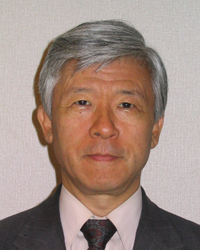 Outline LoRa, SIGFOXなどの独自仕様のLPWAと、そのLTE版に対応するNB-IoTのサービスが海外中心にサービスがされている。これらはIoT/M2Mの中核である広域センサネットワークとして、多様なサービスをする。本講演では、急速に進展するこれらの技術の概要、展開動向、将来展望を述べる。Non-cellular LPWA represented by LoRa and SIGFOX, and cellular LPWA such as NB-IoT and LTE-M have been rapidly emerging as wide area sensor networks enabling a wide variety of IoT/M2M applications. My presentation gives an overview and perspective of these networks including latest technology, service deployment trends and future perspective.
Short C.V.
|
| 10:30 - 10:45 |
Interoperable Wireless Communications for IOT
Phil Beecher
Chairman Wi-SUN Alliance  Outline This presentation provides an overview of Wi-SUN Alliance profiles for interoperable standards based wireless communications for IoT applications. Wi-SUN profiles support both large scale outdoor IoT applications as well as Home Area Networking
Short C.V.
|
| 10:45 - 11:00 |
Orange confirms to go with LoRa for IoT
Jean Michel Serre
President Orange Japan Co., Ltd. 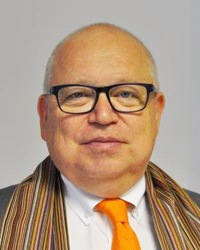 Outline A part of its Essentials2020 strategy, the Internet of Things (IoT) is focus area for Orange, which plans to generate 600 million euros in revenue by 2018. After nearly a decade of experience as an operator in machine-to-machine (M2M) communications with its 2G/3G/4G networks, Orange is now broadening its connectivity offer and preparing for the future of the IoT. With this network based on LoRa technology, it is especially useful for connecting sensors in Smart Cities. Orange is also continuing the work on the standardisation of future cell networks (2G/4G) for the IoT, which will be operational in 2017 and for 5G by 2022.
Short C.V.
|
| 11:00 - 11:15 |
Make things come alive
Michael Lee
Ecosystem/ Director, Global Ecosystem Partner, Asia SIGFOX 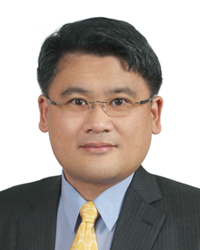 Outline From day one, the Sigfox network has been designed for the “mass IoT” market, defined by simple use cases requiring low data exchanges and enabling years-to-decades of battery life for connected devices.Global scalability, cost and energy consumption have been the three greatest barriers to IoT mass adoption. Sigfox entered the global IoT market to break down these barriers. Rather than using existing technologies, Sigfox has taken a unique approach as Ultra-Narrow Band. The company is rolling out the first global IoT network to listen to billions of objects broadcasting data, without the need to establish and maintain network connections. This game-changing shift, that drastically reduce energy consumption and costs, will fuel the IoT mass market deployment. Sigfox is also complementary to other wireless technology like Bluetooth, WiFi, GPS and classical cellular 2G/3G/4G etc. By combining other connectivity solutions with Sigfox, business cases and user experience can be drastically improved.
Short C.V.
|
| 11:15 - 11:30 |
NB-IoT: Ready for Global commercial Launch Now
Wu Liangping
Vice President of cellular IoT product line Huawei Technology Co. Ltd, 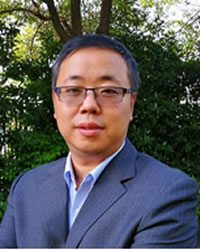 Outline 2017 is the first commercial year for NB-IoT, and Huawei is leading the industry chain and working with global partners. The NB-IoT 3GPP standard was finalized in June 2016, and Huawei NB-IoT chipset/module are ready for commercial shipment globally. More than 40 applications have been developed and tested in our global NB-IoT labs, and the NB-IoT forum was established in Feb. 2016 under GSMA's organization with more than 50 members. In this year 30+ operators will commercially deploy NB-IoT networks in 20+ countries.
Short C.V.
|
| 11:50 - 12:40 |
パネルディスカッション
Panel Discussion
司会:大森慎吾、モデレータ:阪田史郎、
パネリスト:Jean-Michel Serre, Michael Lee, Phil Beecher, Wu Liangping Chair: Shingo Ohmori, Moderator: Shiro Sakata, Panelists: Jean-Michel Serre, Michael Lee, Phil Beecher, Wu Liangping Outline 世界の注目を集めるLPWAの技術やサービス展開について、エンジニア、及びユーザー目線からの鋭い切り口で、質疑とディスカッションを行います。It is an open panel discussion including deeply cutting questions from engineers'/users' point of view about the technology and future applications/services of LPWA gathering the attention of the world. |
May, 25
| 15:00 - 15:30 |
Security in 5G: the devil is in the details
Sylvain GUILLEY
Co-founder and lead scientific advisor Secure-IC 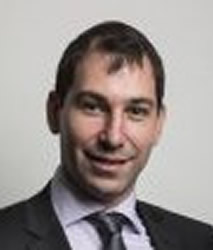 Outline Security is one mandatory feature of 5G, one needs to consider with great care. Actually, security is needed for various reasons in each vertical: availability for industry 4.0, privacy for end-user data exchange, safety for connected vehicles, confidentiality for business applications, etc. End-to-end security will, of course, require "secure by design" architecture, information security management systems, and third party validation with certification schemes. However, good design and good practices might not be enough. In this talk, I'll report on cutting-edge research carried out at Secure-IC, where we show how to bypass carelessly implemented security mechanisms. One prominent example is the risk of so-called micro-architectural attacks. Those allow to exploit side-effects of computations to recover secret data from (apparently) secure threads. For instance, the analysis of cache hit / cache miss patterns in a processor makes it possible to recover long term and ephemeral asymmetrical cryptographic keys and also to bypass some software-level protections against cyber-attacks. I'll show that those attacks can target both the terminal (despite TEE-kind of protections) and the core network (despite ASLR-kind of protections). To conclude, I'll suggest some coding patterns to mitigate such sneak attacks. |
|---|---|
| 15:30 - 16:00 |
Meeting the challenges of 5G wireless with Artificial Intelligence (A.I.)
Monty Barlow
Wireless and Digital Services Director Cambridge Consultants Ltd 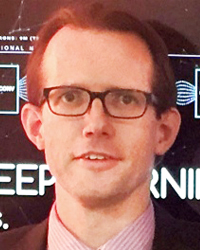 Outline Recent advances in machine learning suggest that building truly intelligent systems and services will soon be possible. However today, most A.I. systems which require predictable performance and reliability still rely on much older, rule-based technology.This talk looks at the changing landscape of A.I and the impact of rapid changes in the field of machine learning. We look at the opportunities to apply A.I. to fifth generation (5G) wireless networks to improve network resilience and capacity. We look at some particular challenges wireless systems present to A.I., and the novel approaches Cambridge Consultants is taking to develop robust, deployable systems.
Short C.V.
|
| 16:00 - 16:30 |
Single chip solutions for LTE CATM1 and NB-IoT
Niall Keegan
Director, Business Development, Japan Sequans Communications 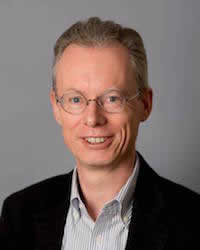 Outline Sequans "Monarch" is a single-chip LTE Cat M1/NB1 solution ideal for adding Cat M1 and/or NB1 LTE connectivity to narrowband, low data rate M2M and IoT devices, including utility meters, industrial sensors, health and fitness bands, asset trackers, and numerous other devices for smart home, smart city, and wearable applications.In this presentation Sequans will discuss the unique features of Monarch and how customers world-wide are using Monarch to efficiently connect their products to the Internet of Things.
Short C.V.
|
| 16:30 - 16:50 |
CEA-LETI solutions for 5G and Beyond
Antonio De Domenico
Research Engineer, Security, Smart Devices and Telecommunication Department CEA LETI 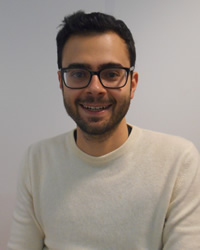 Outline 5G will face severe backhaul, fronthaul and complexity bottlenecks in its real operational functioning due to extensive network densification, the growing uplink capacity demand and the explosion in number of connected devices. Therefore, it will be mandatory to bring connectivity, computation and storage support at the edge of the network to limit service delay and both devices and network energy consumption. This is why CEA LETI is developping innovativive solutions on 5G and Beyond. This talk present our view ono 5G and what lies beyond and presents ‘LETI inside’ solutions.
Short C.V.
|
| 16:50 - 17:10 |
Imec's solutions for the future: white-box IP for 5G, mm-wave, ultra-low-power wireless and IoT
Dirk VAN EESTER
Consultant for imec.IC-link at D-VECS IMEC 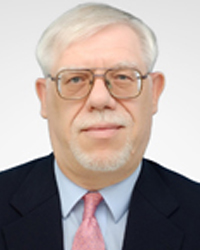 Outline With the increased use of wireless real-time video and with the outlook of massive machine-to-machine communications in the IoT environment, the standards and the requirements of wireless technology have been changing. On one hand, the IoT environment requires ultra-low-power solutions in order to achieve a battery life of 10 years; on the other hand, the move to higher bandwidths triggered a move towards millimeter wave frequencies. Both of these evolutions are a major challenge for developers. Imec has shown vision in this development and its innovative R&D efforts have resulted in white-box IP that is available for developers, significantly reducing the risk and time-to-market in following the new wireless direction.
Short C.V.
|
May, 25
| 17:20 - 18:00 |
RF Front End modules & components for cellphones : market and technology trends
Claire Troadec
Activity Leader | RF Devices and Technologies Yole Développement  Outline Deployment and access to the 3G/4G network has accelerated the smartphone trend. It allows consumption of more messaging, music, photo, movie streaming and video chatting. High quality video download and upload is definitely driving needs for enhanced bandwidth and peak data rates.This continual growth of mobile data has led to a need to use more of the radio spectrum. In mobile communication, this resource becomes scarce as the number of users and technologies explodes. In order to face this overflowing demand, handsets have to meet complex requirements such as : •Multi-band for regional and global roaming •Multi-mode to support multiple cellular modes including 2G, 3G, 4G, WiFi/Bluetooth (BT), Near Field Communications (NFC) and Global Positioning System (GPS) •Multiple-Input Multiple-Output (MIMO) to allow higher data rates and higher effective range •Smart antenna techniques such as beamforming or diversity to enhance the performance of a single data signal •CA to support broader bandwidths, which improves broadband experience, offering higher peak data rates, higher overall network capacity and lower latency. In our talk, we will focus on the RF Front End module and components for cellphones. We will describe how 4G+ or early 5G will impact this market. Finally we will highlight the expected technology evolutions from an architecture point of view down to a semiconductor technology perspective.
Short C.V.
|
|---|
Other seminars (mostly in Japanese)
Please refer to the seminar information on Japanese website.
Seminar Venue MAP
- Seminar Site 4 (T-51)
- Seminar site 5
- Seminar site 6 (T-57、58)
Seminar Venue MAP is here(coming soon)
How to register
Please register yourself from here!
[ Attention ]
The seminar sites are located inside the exhibition hall.
Please be reminded to complete on-line pre-registration to enter the WTP 2017 venue, in addition to the registration for seminars, and you will be able to receive the entry card at the reception desk.